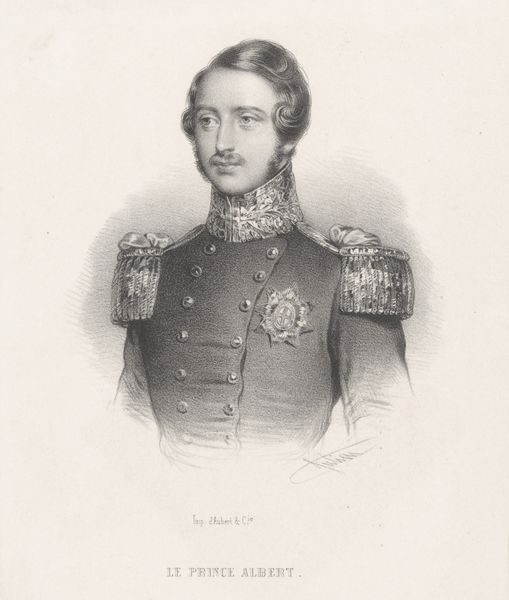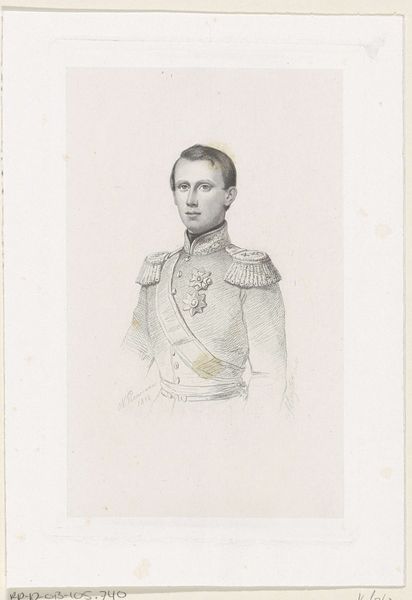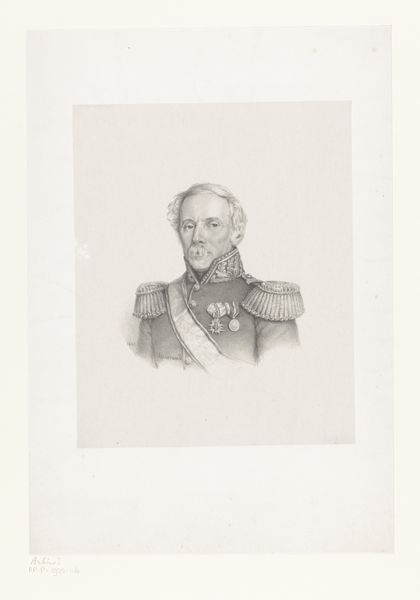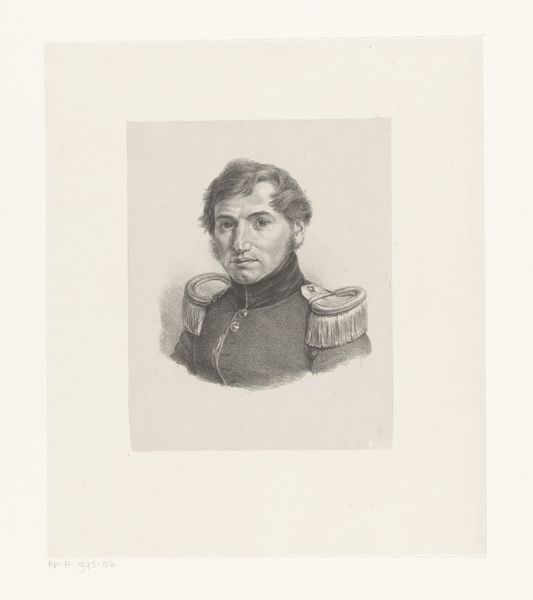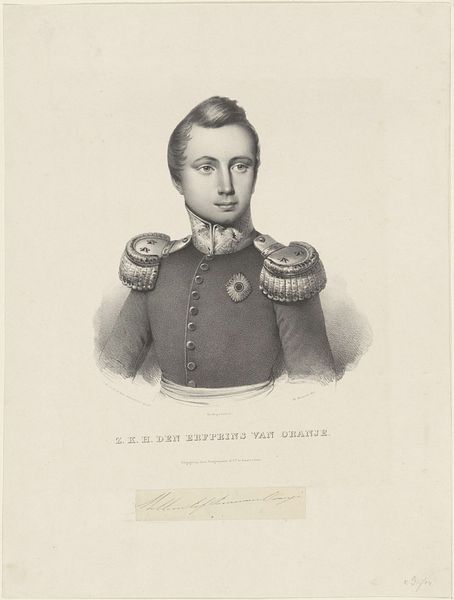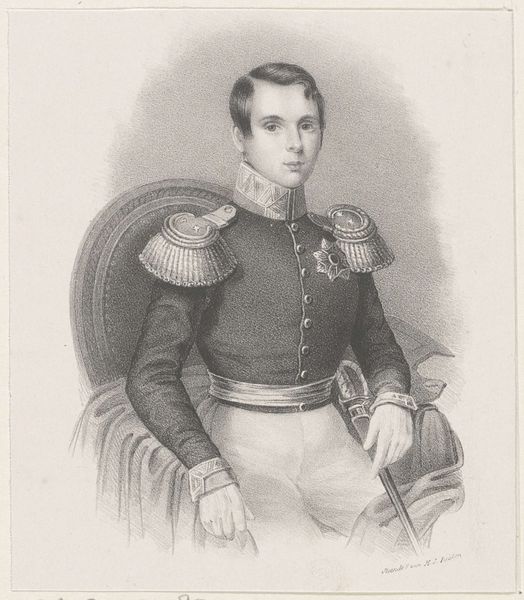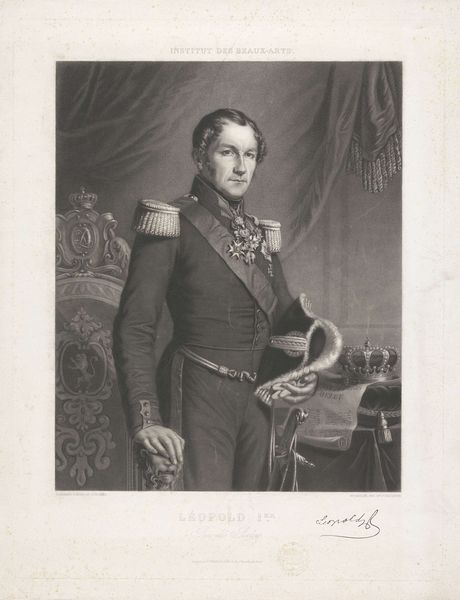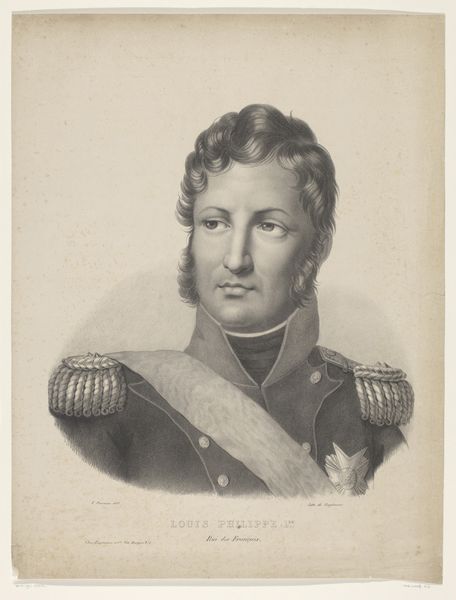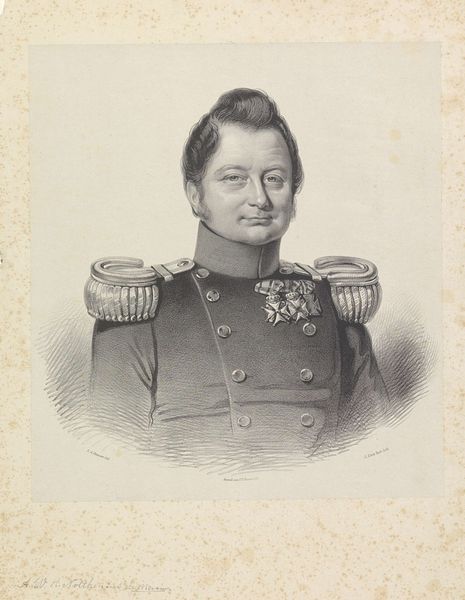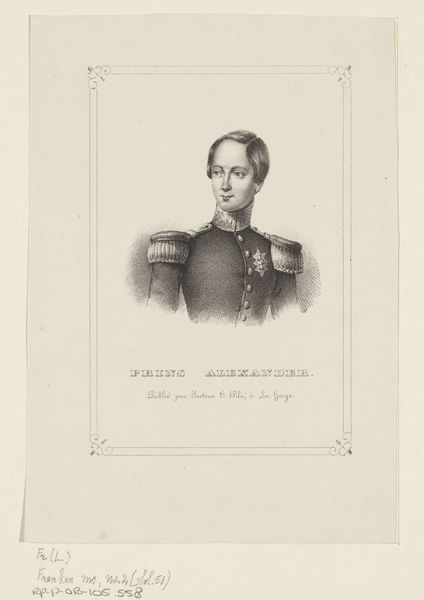
drawing, pencil, graphite
#
portrait
#
drawing
#
charcoal drawing
#
figuration
#
pencil drawing
#
romanticism
#
pencil
#
graphite
#
portrait drawing
#
academic-art
#
graphite
Dimensions: height 231 mm, width 180 mm
Copyright: Rijks Museum: Open Domain
Curator: This is a pencil and graphite drawing from approximately 1838, titled *Portret van een officier*, or *Portrait of an Officer*, attributed to Michel Mourot. It’s currently held here at the Rijksmuseum. Editor: My first impression is… reserved. There's a delicate fragility to the rendering, and he appears to be almost holding his breath, suppressing a smile. It feels very… Romantic, in that sense. Curator: Precisely. And consider the visual cues of the military attire, yet depicted through the softness of graphite. How do you interpret that potential tension? Editor: To me, the uniform represents more than just military might. It also indicates a position within a complex social hierarchy, of course, and perhaps an aspirational identity that the sitter seeks to embody. The choice of graphite suggests a vulnerability that undercuts any intended display of power. Curator: A vulnerability underscored, perhaps, by the slight blurring of the lines around the figure. Graphite as a medium lends itself to subtlety. There's a definite academic quality in its realism, yet I see something more here, perhaps in the faint longing of the eyes, that places it squarely within the Romantic era. This isn't simply a representation of status; there's an interiority at play. Do you agree that the portrait resonates beyond the literal depiction? Editor: I do. While it may have initially served to project a particular image – one of strength and order – what remains speaks to the human condition, not merely to military standing. And I notice, as well, the minimal background forces one to read the gaze, which suggests some kind of inner drama. Curator: The portrait reminds me of a historical period rife with political maneuvering; portraits of military leaders played a very important role in shaping political events. He wants to impress us, which raises inevitable questions of power dynamics, then and now. Editor: Agreed. What started, presumably, as an effort to preserve and project status now offers us something much more subtle and deeply affecting, the portrait has outlived its original moment. I found my gaze lingers now in ways surely unanticipated by both sitter and artist.
Comments
No comments
Be the first to comment and join the conversation on the ultimate creative platform.

